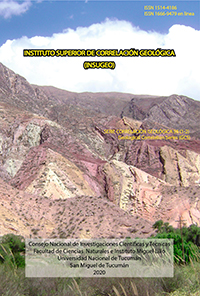Serie Correlación Geológica 36
Contribution of geoelectric parameters to investigate the hydraulic characteristics of an aquifer in hard rock terrain
Descargar trabajo en formato PDFResumen
CONTRIBUCIÓN DE PARÁMETROS GEOELÉCTRICOS PARA INVESTIGAR LAS CARACTERÍSTICAS HIDRÁULICAS DE UN ACUÍFERO EN TERRENO DE ROCA DURA. El trabajo relaciona las mediciones de resistividad eléctrica con la transmisividad en los acuíferos alojados en rocas graníticas de una cuenca del estado de Andhra Pradesh, India. Se interpretaron las curvas de sondeo eléctrico y se correlacionaron las propiedades eléctricas de la zona saturada con las conductividades y transmisividades hidrológicas obtenidas en testeos tipo slug. Trabajos anteriores apoyan la relación directa entre los parámetros geoeléctricos e hidráulicos en el medio poroso, de manera contraria a lo observado en esta oportunidad, donde existe una relación inversa en el terreno de roca dura (principalmente terreno granítico). Alternativamente, también se analizaron los tipos de medios porosos con diferentes combinaciones de resistividades dentro de una misma capa del acuífero. Todos ellos muestran una relación directa entre la resistencia transversal revisada y la transmisividad, apoyando así los hallazgos que en áreas de roca dura, especialmente en terrenos graníticos, no existe una relación directa entre transmisividad y resistividad transversal. El estudio concluye que establecer una relación global entre dos parámetros no es significativo y tiende a generar errores. La relación empírica entre ellos podría definirse apropiadamente sobre una base zonal, dado que en los acuíferos de roca dura se reconoce un marco hidrogeológico más heterogéneo.
Abstract
An attempt has been conducted to relate the electrical resistivity measurements with the transmissivity in the granitic aquifers of a watershed in the hard rock terrain of Andhra Pradesh state, India. Electrical sounding curves were interpreted and the electrical properties of the saturated zone were correlated with hydraulic conductivities and transmissivites obtained from slug tests. Earlier works support the direct relationship between the geoelectric and hydraulic parameters in the porous medium. Contrary to this, an inverse relationship is observed in the hard rock terrain (mainly granitic). Alternatively, the constitution of equivalent porous media with different combination of resistivities within the same thickness of the aquifer layer were also analyzed. All of them show a direct relationship between revised transverse resistance and transmissivity to some extent, thereby supporting the findings that in hard rock areas especially in granitic terrain, this direct relationship between transmissivity and transverse resistance do not exist. Establishing a global relationship between two parameters is not meaningful and has large errors, however, the empirical relationship between them could be very well established on a zonal basis. It is justifiable as hard rock aquifers are well known compartmented and hydrogeology is more heterogeneous.






